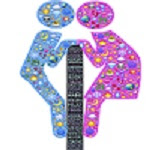communication barriers
There are multiple barriers to the communication process. these barriers result in distortion and misunderstanding of the intended communique. the barrier can be physical, psychological,
emotional, cultural, linguistic, etc.
Language barriers:- Language can create many obstacles in communication. literally, people from different regions and countries may interpret the same words differently. difficult words, subject-specific terminology, unfamiliar expressions and ambiguous words having multiple messages, create hurdles on communicating. it is also a fact that, that the linguistic ability of various people in the workplace is different. therefor, it is important to use clear, simple easily understood language in most of your official communications.
Cultural barriers:- Understanding the cultural aspects of communication refers to having knowledge of different cultures in order to communicate effectively with cross-culture people. understanding various cultures in this era of globalization is an absolute necessity as the existence of cultural differences between people from various countries, regions tribes and, religions, where words and symbols may be interpreted differently can result in communication barriers and miscommunications.
The same principle applies to families and family groups, where people have different expectations according to there background and traditional leading to friction and misunderstanding. A very simple example is the way food is served by a member of a family, it can be the cause of appreciation of displeasure.
Gender barriers:- Men and women communicate differently. the reason for these lies in the wiring of a man's and woman's brains. men talk in a linear, logical and compartmentalized manner whereas the women use both logic and emotion and are more verbose. this may be the cause of communication problems in an office where both men and women work side by side.
gender bias is another factor in communication barriers. due to traditional mindsets, many men find it difficult to take orders from or provide information to women.
Physical barrier:- There is a result of the surroundings. Noise, technical disturbances, outdated equipment, distant locations, office doors, separate area for people of different areas, large office spaces, old technology and lack of appropriate infrastructure can lead to a problem in the transmission of a message.
Perception barriers:- Each one has perceives the world differently and this causes problems in communicating. the same content is seen and interpreted differently by two people and therein lies the root cause of miscommunications and misunderstandings.
Emotional barriers:- One of the chief barriers to open and free communication is the emotional barrier. anger, fear of criticism or ridicule, mistrust of person, suspicion of intentions, jealousy, anxiety and many more feelings and sentiment we carry within us, affect our communication ability and quality. A person who is upset and disturbed cannot pass on or receive information appropriately and objectively. his emotions will color his preception and assessment of the communication.
Technology barriers:- In today's world, communication modes are primarily technology-driven. this communication technology is being constantly upgraded or new formats emerge ever so frequently. moreover, an individual is faced with a huge amount of information every day in the form of emails, text and social updates. multitasking is the norm these days. the information overload and trying to accomplish too many things together can result in a gap in communication and miscommunications.
Organizational structure barriers:- Communication problems occur when the systems, structures, and processes in the organization are not clear or have a gap in them. if the chain of command is unclear, a person may not know whom to contact for a particular issue. inappropriate transmission systems, lack of supervision, and unclear role and responsibility demarcations lead to confusion and inefficiency.
Physiological barriers:- Ill health, poor eyesight, hearing difficulties or any other physiological problems can handle ineffective interaction with others.
Attitude barriers:- A proactive, motivated worker will facilitate the communication process, whereas a dissatisfied, disgruntled, shy, introvert or lazy person can delay, hesitate in taking the initiative, or refuse to communicate.


No comments:
Post a Comment
Please do not enter any spam link in the comment box.